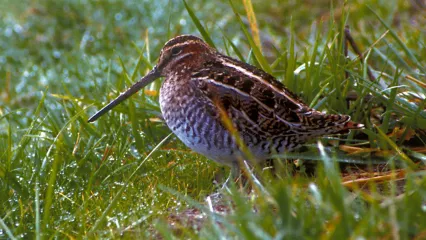
Description
Against steel-gray skies a squadron of birds screams across the outside edge of the decoys, seemingly daring the hiding hunters to attempt a shot. But the hunters wait, and soon their patience is rewarded. A pair of handsome drake ring-necks dressed in their formal winter finest are brought to hand; a true prize for both the game strap and the skillet.
The ring-necked duck (Aythya collaris) is found across North America with the exception of the Arctic region. Males are mostly black with a white belly and rings of gray around the base of the bill. The female has tan sides, a brown back and a white belly, with a less pronounced bill ring. The female's eyes are also often a darker color than the male's eyes.
"Ringbill" is the name hunters have given this diving duck of forested ponds and bogs, because the two white rings on its bill are much more visible than its brownish collar. A powerful swimmer, the ring-necked duck can forage to depths of 40 feet in search of plant and animal fare.
Ring-necked ducks are mainly vegetarian, typically about 80 percent of their diet consists of seeds, pondweeds and tubers. The ducks do, however, supplement their diets with insect larvae, mollusks, worms, and crustaceans. Their intake of invertebrates (especially aquatic insect and snails) increases after arrival on breeding grounds in Canada. Young ring-necks eat mostly invertebrates, particularly during their first two to three weeks after hatching.
Next time you are out and you spot a ring-necked duck, or even a pair of them, take a minute to watch their behavior. Because they have such a deep diving ability, they make for interesting entertainment.
Size
Adults are approximately seven to eight inches long and weigh about two pounds, and females are typically smaller than males.
Life Cycle
In March, while on the way back from their wintering grounds in the southern U.S., ring-necks begin pairing up with their mates in preparation for courtship. The males are known to throw their head back as it swims away in an effort to entice the female to follow him. Ring-necked duck nests are built on floating islands or in open marshes. The female selects the nest location and builds the nest from surrounding vegetation. The female starts laying her eggs from late April to early June. Clutches of eight eggs are considered typical, but can range from six to 14 eggs. The eggs are a milky white color. The female incubates her clutch for a period of about 27 days.


